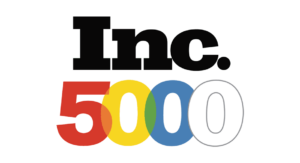In corporate governance, the board selection process has often been characterized by its reliance on a closed network of contacts and a somewhat opaque approach to recruitment. This conventional method has its limitations, particularly in fostering diversity and adapting to the rapidly changing demands of the global business landscape. Enter innovative networking—a transformative force poised to revolutionize the way board members are chosen. By leveraging digital platforms, professional networking events, and social media, innovative networking strategies promise a more inclusive, transparent, and strategic approach to board recruitment.
Martin Rowinski, CEO of innovative tech platform, Boardsi, reviews how modern networking practices are reshaping the boardroom, breaking down barriers to entry, and promoting a richer diversity of thought and experience. Rowinski’s exploration aims to reveal the potential of innovative networking not just to fill board seats, but to align board composition with the broader objectives, ensuring a future where boardrooms are as diverse and dynamic as the markets they serve.
“Historically,” says Martin Rowinski, “the process was tightly knit within a framework of personal networks and affiliations. Board members were often selected based on pre-existing relationships, with a heavy reliance on the recommendations of current board members or executive leadership.”
This approach often led to homogeneity, limiting the scope of diversity in thought, background, and expertise within the boardroom. The dawn of the digital age has ushered in a paradigm shift towards more open and transparent methods of board selection. Unconfined by the narrow corridors of personal networks, companies have begun to embrace a more inclusive approach to identifying potential board members.
Innovative Networking Strategies in Action
In the quest to reshape board selection, innovative networking strategies have become key players. These strategies leverage the power of digital platforms, professional networking events, and social media to not only widen the talent pool but also to infuse boardrooms with diverse perspectives and expertise.
Notes Rowinski, “Digital platforms, like Boardsi, specifically designed for board recruitment and executive networking, are leading the transformation by offering a space where seasoned professionals can highlight their achievements, aspirations, and unique value propositions.”
They enable organizations to transcend geographical and industry boundaries in their search for board members, ensuring that the selection is based on merit, strategic fit, and potential to contribute to diversity of thought and experience. Algorithms and data analytics play a crucial role here, helping match candidates to boards where their impact would be most significant. Professional networking events have also evolved, becoming more targeted and inclusive.
With its unparalleled reach and immediacy, social media offers another layer of innovation in networking strategies. Platforms like LinkedIn, Twitter, and even Instagram have become arenas for thought leadership and professional branding. They allow potential board candidates to showcase their expertise, insights, and values, making them visible to organizations looking to diversify their boardrooms.
The emphasis on diversity and inclusion within these networking strategies is pivotal. It’s understood now more than ever that diverse boards are better equipped to navigate complex business landscapes, as they bring a multitude of perspectives, problem-solving approaches, and experiences.
Impact on Corporate Governance
The shift towards innovative networking and its impact on corporate governance is not without challenges and criticisms. One potential issue is the risk of diluting board cohesion and unity of purpose, as diverse perspectives can sometimes lead to conflicts or prolonged decision-making processes. Additionally, the reliance on digital platforms and social media for networking raises concerns about data privacy and the potential for superficial assessments of candidates’ capabilities and fit.
Despite these challenges, the overall impact of innovative networking on corporate governance is overwhelmingly positive. By fostering boards that are diverse, well-connected, and more reflective of the broader society, organizations can achieve higher levels of agility, innovation, and stakeholder engagement. Innovative networking continues to dismantle traditional barriers, forging paths toward more inclusive and dynamic governance structures. The focus must be on harnessing these changes to foster boards that are deeply connected and strategically aligned, ready to navigate the complexities of a rapidly changing world.
Source: CEO Weekly









